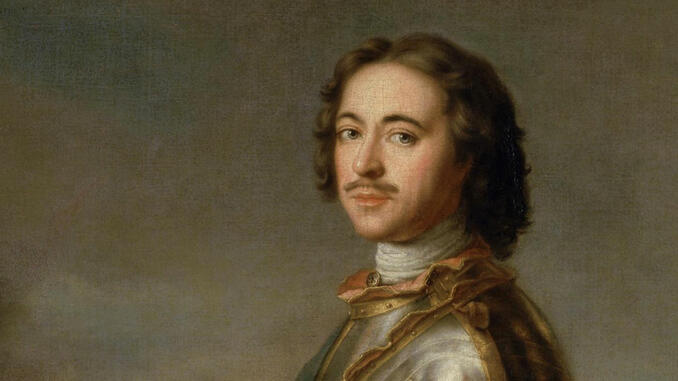
Peter the Great, also known as Peter I, whose real name was Pyotr Alekseevich, was born on June 9th, 1672, the son of Tsar Alexis and Natalya Naryshkina. He was named after the apostle Saint Peter. When Peter was just four years old his father died. Feodor III, Tsar Alexis’s oldest son from his first wife, Maria Miloslavskaya, was next to inherit the Russian throne. However, he died after reigning only six years. Feodor did not have any surviving children and a dispute broke out between the Miloslavskaya and Naryshkina families as to which would gain the throne. On the Miloslavskaya side, Ivan Alekseyevich would be next in line to the throne. On the Naryshkina side, Peter was next. The Boyar Duma (a council of Russian nobles) ruled that Peter would be tsar while Peter’s mother Natalya Naryshkina acted as regent until the young boy became old enough to rule on his own.

Given the nature of power, being a child ruler in that day and age was a very precarious position, often ending with the child caught up in the power struggles of others. For Peter it was his step-sister Sophia Alekseyevna who set her eyes on the throne. Not happy with the Boyar Duma’s decision, Sophia was determined that she should be regent with Ivan and Peter as co-tsars, with Ivan of course being the senior of the two tsars. Sophia plotted an uprising and convinced the Streltsy (Russia’s elite military corps) to join the plot. During the uprising the Streltsy stormed the Kremlin where Peter was hiding. While Peter was not their target, they butchered anyone caught hiding. Peter witnessed his dad’s close friend and confidant of his mother thrown over a balcony and hacked to pieces by a raging crowd. After the butchery, Sophia successfully became regent. This was indelibly a very traumatic event in Peter the Great’s life and most likely ingrained politics and violence together in his psychological makeup. For the rest of his life he did not shy away from having people executed, often even taking part in the killing and torture of individuals himself.
For seven years Sophia ruled as regent and as an autocrat. Every decision made had to be approved by her. She even went as far as creating a duel-seated throne for the co-tsars to sit with a hole in the back where she could listen in to their conversations with subjects and whisper information and answers to questions for the two boys. The throne still survives to this day and can be seen in the Kremlin Amory in Moscow.
The young Peter showed no issues with Sophia being the de facto ruler of Russia. He was a child after all and had other interests such as playing with his own “toy” soldiers which were in fact real men with real weapons he could order around like a general on the battlefield. He also loved boats. He loved boats the way a modern boy might be fascinated by firetrucks. Peter spent much time quizzing foreign sailors and inspecting their merchant ships in Arkhangelsk to learn boat building and sailing techniques. His love for boats would play a major role later in his reign.
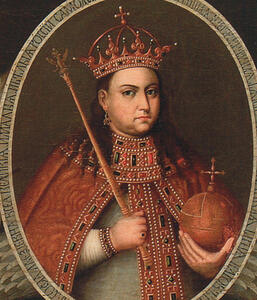
Peter did not like schooling and as he became older, he ignored his studies more and more. However, he was an incredibly smart and curious individual. In a country that was known for its backwardness and lack of development compared to the rest of Europe, Peter would grow up to be considered the equivalent of Renaissance Man. By the time he was 17 he was forced by his mother to marry Eudoxia Lopukhina. It would be an unhappy marriage with Peter always being cold, distant, and even cruel to his wife. The marriage would end ten years later with Peter forcing Eudoxia to become a nun so the union could end on terms that were acceptable to the standards of the Orthodox Church.
In the same year that Peter was forced to marry Eudoxia, he began to plot taking power away from Sophia. Sophia’s position was greatly weakened by two unsuccessful Crimean campaigns against the Crimean Khanate to stop raids into Russia by Crimean Tatars. Over time, the two rulers had begun eyeing each other warily. In August of 1689, things came to a head. A false letter had been circulated amongst the Streltsy that Peter and his “toy” soldiers were on their way to have Sophia and Ivan killed. Sophia immediately put the Streltsy on high alert and sent out patrols. Peter, unaware of what was transpiring, was warned that night that the Streltsy were coming to kill him. He immediately fled to the Troitse-Sergiyeva Lavra monastery that also acted as an impenetrable fortress. From there Peter recruited adherents to his cause. Both rulers appealed to the patriarch of Moscow and all of Russia, Joachim, who ultimately sided with Peter. Without his support, Sophia realized she no longer could have the moral authority with the Russian people to cling to power. She was banished to a convent where she was forced to give up her name and title.
Ivan and Peter remained co-tsars and Peter’s mother, Natalya Naryshkina, returned as regent. She remained regent of Russia until her death in 1694, upon which Peter and Ivan assumed full responsibilities. In actuality, it was Peter who ran the day-to-day activities of governing. Since early childhood, Ivan had always been of poor health both physically and mentally. He was described by foreign ambassadors as senile, paralytic, and almost blind. In 1696 he died at the age of just 29. Peter was then the sole ruler of Russia.
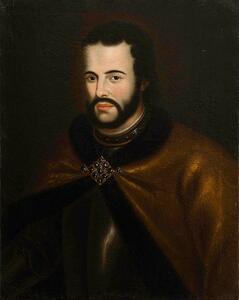
Peter the Great saw early on that his country was refusing to develop as fast as the rest of Europe culturally, economically, and militarily. He loved being in the company of foreigners and learning the ways of their home country. He envisioned a Russia that played a greater role in European affairs. But he could see all the exciting new developments associated with the Enlightenment were missing in Russia. Russia remained in the dark ages.
Economically, Peter knew that access to the sea was one of Russia’s major obstacles. At the time, Russia’s only access to shipping was the White Sea at Arkhangelsk (Archangel) which froze over during the cold winter months preventing it from being used fulltime as a port. Peter began eyeing other, warmer, access points to the sea, but all potentially in his reach were controlled by other countries and empires. The Baltic Sea was controlled by Sweden, the Black Sea was controlled by the Ottoman Empire, and the Caspian Sea was controlled by the Safavid Empire. Peter first set his sights on the Black Sea. In 1695, the year before Ivan died, Peter launched a military campaign to take the Ottoman fortress of Azov, near the Don River. Taking the fortress would give Russia access to the Black Sea. The campaign ended in complete failure. Russian fighting forces were no match for the fortified positions and unable to take advantage of a siege on the fortress. Peter withdrew his forces.
After his defeat at Azov, Peter knew building a navy would be key to taking the fortress. Astonishingly by the summer of 1696 he had helped build a Russian navy of about 30 ships, and then tried to take the Azov fortress anew. This time he was successful. By summer’s end Russia had its first naval base on the Sea of Azov at Taganrog. Peter the Great had become the father of Russia’s navy.
In 1697, with victory fresh on his mind, Peter set off on what would become known as the “Grand Embassy” across Europe. He had designs for the northern coast of the Black Sea which would mean he would have to wage another war with the Ottoman Empire, a war he could not fight alone and needed allies for. For a year and a half Peter made his way across Europe with dozens of his closest friends and aids. Ultimately, the situation in Europe was not conducive to garnering support for a campaign against the Ottoman Empire. France was an ally of the Ottoman Empire, Austria wanted to maintain peace to its East so it could wage war to its West, and the rest of Europe was preoccupied with the War of Spanish Succession. Nevertheless, the tour of Europe was not a complete bust.
For nearly all of his journey, Peter tried to conduct the trip under an assumed identity so he would not be bothered with the trappings of officialdom, however, many were not fooled by this seemingly well-funded group of Russians with a conspicuously tall leader who matched the description of the Tsar of Russia down to the wart on his cheek. On his journey, Peter rented ordinary houses. He lived as a common traveler. No matter where he went, he was always taking notes and was curious of just about everything. Nothing escaped his notice. He took notes on the latest clothing trends and cultural habits. If he saw, for instance, a modern printing press, not only did he want to know all about it, he wanted to learn how to use it. And so he would. Peter spent much time in the shipyards, again learning about the latest designs and ship building techniques. He spent four months with Dutch East India Company shipbuilders—the best in the world—gaining experience building ships. All the knowledge he gained during the Grand Embassy he would take home to help modernize his own country.
The Grand Embassy was cut shorter than planned when a Streltsy uprising broke out back home. However, the uprising was quickly suppressed before the Embassy could rush back. On the way back, Peter stopped in the Polish–Lithuanian Commonwealth and met with Augustus II. This meeting would form the foundation of a future alliance. Once Peter was home in Moscow, he made sure there was hell to pay for the uprising.
Peter launched a campaign to root out accomplices of the uprising. Over 1200 people were tortured and killed. Torture included being whipped to death with a knout, stretched until limbs were broken, the use of thumbscrews, slow roasting over fires, or skin pierced with hot irons. As mentioned above, Peter sometimes personally took part in the torture and killing. Torture was used to force victims to confess and name other accomplices which yielded more arrests and more torture in a what became a vicious cycle. The executed had their bodies publicly displayed as a warning to others who may have the urge to challenge the Tsar. Eventually in the years to come, the Streltsy was disbanded completely with some members being deported with their families to Siberia. The person the Streltsy said they wanted to replace Peter with was the former regent, Sophia. Peter discovered her being banished to a convent was not enough. There she had formed her own virtual court and was living a life of royalty. Peter thus forced her to become a nun so she could no longer have the luxury of material objects or even have sexual relationships.
The Streltsy Uprising was just one of several during Peter the Great’s reign. The Bashkir Rebellion (1704-1711), the Astrakhan Revolt (1705), and the Bulavin Rebellion (1707-1708) were, just like the Streltsy Uprising, brutally suppressed. All had origins relating to Peter’s rapid reforms to modernize Russia and make it more European. His reforms were not just superficial, but dictated what clothes had to be worn, the shaving off of beards, and of course, the enforcement of taxes. No parts of life and society seemed to escape his reforms. Peter was determined to modernize Russia and was impatient to do it gradually. Russia was going to change by sheer force of his will.
By 1700 Peter the Great was still solidifying his control of the seas. He had signed a temporary truce with the Ottoman Empire that allowed him to keep the fort at Azov and set his designs on securing the northern coasts of the Black Sea in abeyance. Peter turned his attention to the Baltic Sea. Russia, under Tsar Michael I, had ceded access to the Baltic to Sweden in 1617 in the aftermath of the Ingrian War with the signing of the Treaty of Stolbovo, but now Peter wanted access back. Sweden’s rise to empire status had made a number of enemies throughout Europe. Peter formed an alliance with Fredrick IV of Denmark-Norway and Augustus II, who he had met on his return home from the Grand Embassy. Together the three rulers waged war against the Swedish Empire under Charles XII and began what became known as the Great Northern War.
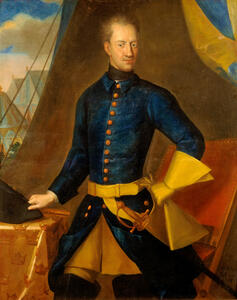
Charles XII was known to be one of the most daring and aggressive military leaders in Europe. He was the product of rigid military training, iron discipline, and total belief in victory. He always seemed eager for a battle no matter what the odds of success may be. So much so, he was often accused of rashness and fanaticism. His fighting style was that of rapid movement and shock tactics while implementing excellent battlefield communications using drums and messengers that easily exploited enemy weaknesses. In leading his men, he often disregarded his own personal safety to lead and motivate his army by example. His physical courage was legendary. Any adversity would bring about steel and ruthlessness in Charles’s character.
When it came to fighting Charles, Peter was far from prepared to face his new adversary. His first battle, the Battle of Narva, ended in complete disaster. The battle saw Charles’s forces take advantage of a blinding snowstorm to catch the Russian army by surprise. Charles’s dash and daring was no match for Peter’s forces. However, Charles was fighting a multifront war. With Peter’s army laying in ruins, he turned his focus to Augustus’s forces further south. This break of significant duration allowed Peter to regroup his army and make territorial gains in the Baltic provinces. He captured the Swedish fortress of Neyn at the mouth of River Neva in 1703 which once again gave Russia access to the Baltic Sea. It was here that Peter laid out his vision to have a new capital of Russia and ordered a new city to be built on the marshy ground. He envisioned the city being the new cultural center of Russia. Charles would contest gains made by Peter at the mouth of the Neva in the following few years, however, he was unable to regain his territory. The new city would be named Saint Petersburg.
Charles would go on to invade Poland and force Augustus II to abdicate his throne in 1706. In 1708 Charles turned his attention to invading Russia in an attempted march to Moscow. While in the beginning Peter and his forces were no match for the Swedish king, he was an astute observer and adapted to Charles’s tactics. Charles’s advance on Moscow was met by a scorched earth policy similar to what Napoleon and Hitler faced centuries later. This prevented Charles and his army from living off the land. Eventually Charles was forced to retreat eastward where he eyed capturing Russian Ukraine. On July 8th, 1709 at Poltava the largest battle of the Great Northern War took place. Charles had laid siege to the Poltava Fortress which acted as a major military and trading center in the region. Peter marched his numerically superior army to relieve the siege. The ensuing clash saw the Swedes fleeing the battlefield. Charles retreated south and crossed the Dnieper River to seek refuge in the Ottoman Empire. The Battle of Poltava was a decisive victory for Peter the Great.
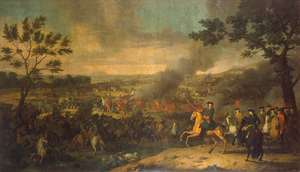
As news spread through Europe it was met by shock and disbelief that a country as backwards as Russia had defeated one of the most feared militaries in Europe. The victory solidified Russia as a major power in European affairs. While the Great Northern war would go on for another eleven years, Swedish power had been greatly eroded and its defeat at Poltava opened up new attacks on the Swedish Empire on multiple fronts. Charles would never admit defeat by the Russians and tenaciously would go on to fight more battles in a vain attempt to regain glory. Charles would die in 1718 as he poked his head out of a trench to reconnoiter the battlefield during the siege of Fredriksten in Norway when a sniper or a stray bullet put a golf ball-size hole in his temple. The Great Northern War would officially come to an end for Russia in 1721 with the signing of the Treaty of Nystad. Peter had solidified his place in Russian history as a great ruler.
During the war Peter had secretly married a second wife, Marta Helena Skowrońska, who would later become known as Catherine I. But domestic tranquility would illude Peter. As he felt he was entering his twilight years of his life he began to focus on succession. Between his two wives Peter had had 14 children, yet tragically only three of his children survived into adulthood—Alexei Petrovich, Anna Petrovna, and Yelisaveta Petrovna (later known as Empress Elizabeth). With Alexei being Peter’s only surviving son he began attempting to groom him for the throne. However, Alexei was a child from Peter’s first marriage to Eudoxia and Peter had shown little love and attention towards his son. Alexei was not fond of his dad. In fact, Alexei was deathly scared of his dad and showed no interest in inheriting the throne. Peter became more forceful in his demands that Alexei take interest in matters of state, however, his demands were met by pitiful letters of reply with Alexei even offering to renounce succession in favor of his own son, Peter. Finally, things came to a head when Alexei fled Russia to escape his dad who had given him an ultimatum of either preparing to become Russia’s next Tsar or to become a monk.

Alexei sought refuge in Vienna under the protection of his brother-in-law Charles VI. For Peter this had become a scandal and greatly embarrassing. After a lot of detective work, Peter had located Alexei’s whereabouts. With his location blown, Alexei fled to Naples. There he was located once again by his father’s men. Peter sent a close aid who convinced the tsarevich to return home to Russia. Scared to once again be in his father’s presence, Alexei made a confession that fingered most of his friends being involved in his conspiracy to escape the country. This began a campaign of terror by Peter. Anyone who had befriended Alexei was arrested and then tortured to death. His servants were either beheaded or had their tongues cut out. Finally, the reign of terror forced even Alexei’s own lover to confess that the tsarevich had designs to overthrow his own dad. For this Peter had his son tried for treasonous crimes. Alexei was tried and found guilty. He would die in the Peter and Paul fortress in Saint Petersburg from torture, the victim of a ruthless father’s paranoia.
Peter himself would go on to live only six and a half more years. He died in 1725 from what amounted to a bladder infection that had turned gangrene. His wife, Catherine, would inherit his throne.
Undoubtedly, Peter the Great was a man of rare intelligence, fortitude, and vision. He alone willed Russia from the dark ages into a more modern future and a major European power. At times he would do this in brutal fashion. Nevertheless, Russia still had a long way to go to catch up with the other, more enlightened, European powers. But Russia had become a force to be reckoned with, and forever would be. After centuries of being dominated by outside powers, Russia could finally feel it was in control of its destiny. Russia at long last had an identity it was proud of. For that Peter the Great will always be a major figure in Russian history.
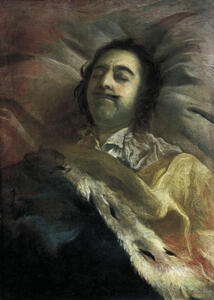
Today, many Russian leaders look at the reign of Peter the Great and see parallels with the post-Soviet conditions of their country. Many also see him as a source of inspiration. Vladimir Putin often references Peter the Great and compares himself to the Tsar. Recently, in a very telling statement, Putin compared his invasion of Ukraine to the landgrabs under Peter. “Peter the Great waged the Great Northern War for 21 years,” Putin stated during an event celebrating Peter’s 350th birthday. “On the face of it, he was at war with Sweden taking something away from it… He was not taking away anything, he was returning. This is how it was.” Putin continued while alluding to the war in Ukraine, “Clearly, it fell to our lot to return and reinforce as well.” In short, what Putin was saying is that he is trying to bring Russia back to its former imperial glory by recapturing regions that became independent in the fallout of the Soviet collapse. To understand the life and times of Peter the Great is to understand the aspirations of Vladimir Putin.
